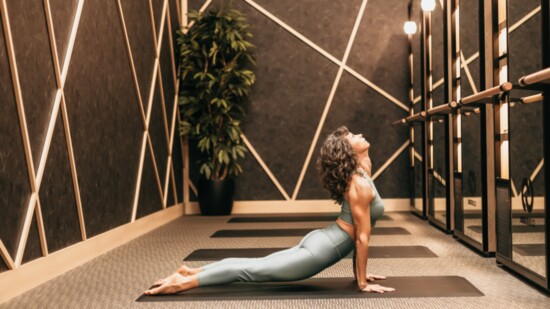Yoga is a lifelong journey of discovering balance amidst everyday chaos. Through intentional movements and mindful meditation, it nurtures both physical and mental well-being, creating a ripple effect that enhances all areas of life. At Club Studio in Kingwood, Texas, members can experience boutique fitness classes and luxurious amenities, achieving serenity and improved health.
What are the key physical and mental health benefits of yoga practice, and how do these benefits contribute to overall well-being?
Yoga enhances strength, flexibility, and mobility while calming the mind and reducing stress for better health. It promotes present-moment awareness through breath, fostering inner wisdom, emotional clarity, self-awareness, and mindfulness, ultimately increasing overall well-being and resilience.
How does yoga help manage stress and improve mindfulness, and why are these benefits important for people of all ages and fitness levels?
Yoga’s adaptability makes it accessible to all, accommodating various skill levels, physical abilities, and wellness goals. Modifiable poses, breathwork, and alignment foster safety, stress relief, and well-being, promoting inclusivity as a holistic, mind-body practice.
What makes yoga a uniquely accessible form of exercise, easily adaptable to various skill levels, physical abilities, and personal wellness goals?
Yoga combines physical postures, breathwork, and mindfulness to reduce stress, improve mental well-being, and calm the nervous system. Its adaptability makes it accessible, enhancing strength, flexibility, balance, sleep, and energy for all fitness levels.
Utthita Hasta Padangusthasana
Hand-to-Big-Toe Pose
Strengthens the legs, particularly the quadriceps, hamstrings, and calves, as well as the core and ankles. The pose also stretches the hips, groin, shoulders, and chest, improving flexibility, strength and posture. Hand to Big Toe Pose improves focus and concentration. Regular practice of this pose can help build self-confidence and empowerment. People with tight hamstrings can bend the extended leg to help reduce the intensity in the hamstring. The wall can offer great balance support. Because this is a single-leg balance pose, improves concentration and focus bringing your awareness to the present moment.
Virabhadrasana 2
Warrior 2
Strengthens the legs, particularly the quadriceps, hamstrings, and calves, as well as the ankles, glutes, and core. The pose also stretches the hips, groin, shoulders, and chest, improving flexibility and posture. Warrior 2 encourages balanced breathing, which can help reduce stress and anxiety. Virabhadrasana 2, a powerful pose, fosters a deeper connection to oneself through its physical and mental engagement. It fosters a profound feeling of inner fortitude and self-assurance. Modifications
include starting with their back foot closer to the front foot or reducing the angle of the bent
knee. Those with tight hamstrings can shorten their stance. The pose requires practitioners to
engage their core muscles and maintain proper whole-body alignment, fostering a feeling of
rootedness.
Urdhva Mukha Svanasana
Upward Facing Dog
Strengthens the wrists, arms, shoulders, back, buttocks, and thighs, contributing to overall strength and endurance. Additionally, the pose stretches the chest, abdomen, and hips, improving flexibility and opening up the front side of the body. It cultivates self-confidence by opening up the heart. Beginners can use blocks under their hands to gain more accessibility into the pose or practice cobra, a gentler backbend. Upward Facing Dog aligns with the broader philosophy or purpose of yoga by emphasizing effort and ease. The pose promotes a sense of grounding and centeredness while also having a rebounding effect that rises through the arms, chest, and spine.
Vasisthasana
Side Planks
Targets numerous muscle groups and areas of the body. It strengthens the core, shoulders, obliques, and legs, enhancing overall stability and balance. By lengthening the spine from the feet to the head, the pose creates space between the vertebrae, thereby improving spinal mobility. Regular practice helps correct postural imbalances, such as rounded shoulders and weak abdominal muscles. Regarding the breath and mental state, side planks encourage deep and focused breathing, which calms the mind and reduces stress. Holding this arm balance for an extended period can be challenging, promoting mental resilience. The pose instills a sense of inner strength, confidence, and resilience. Modifications are available to make the pose more accessible. Options include starting with their knee on the ground or shortening the duration of the hold. Those with wrist issues can place their forearms on the ground instead of their hands. Side Planks aligns with the philosophy of yoga by
emphasizing balance and stability, both physically and mentally. The pose requires practitioners to engage their core muscles and maintain proper alignment, promoting a sense of grounding and centeredness.
"Yoga fosters strength, flexibility, and mindfulness, calming the mind while promoting self-awareness and overall well-being."
"Side Plank strengthens core, builds balance, resilience, and calms mind."
